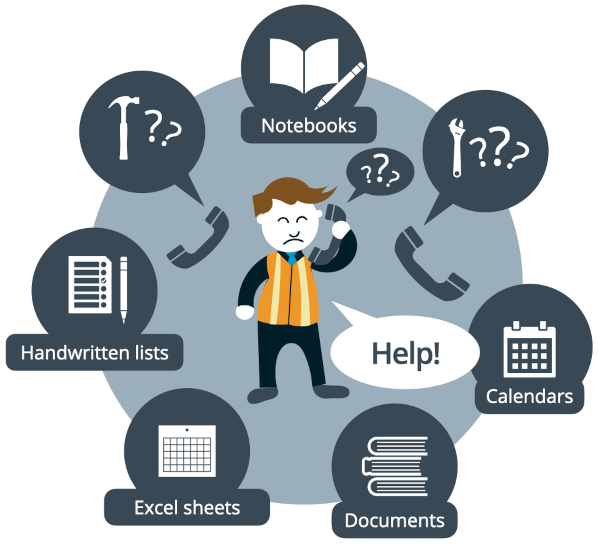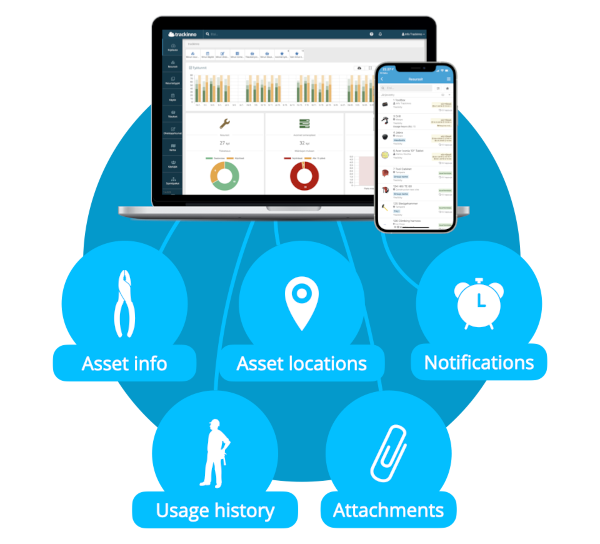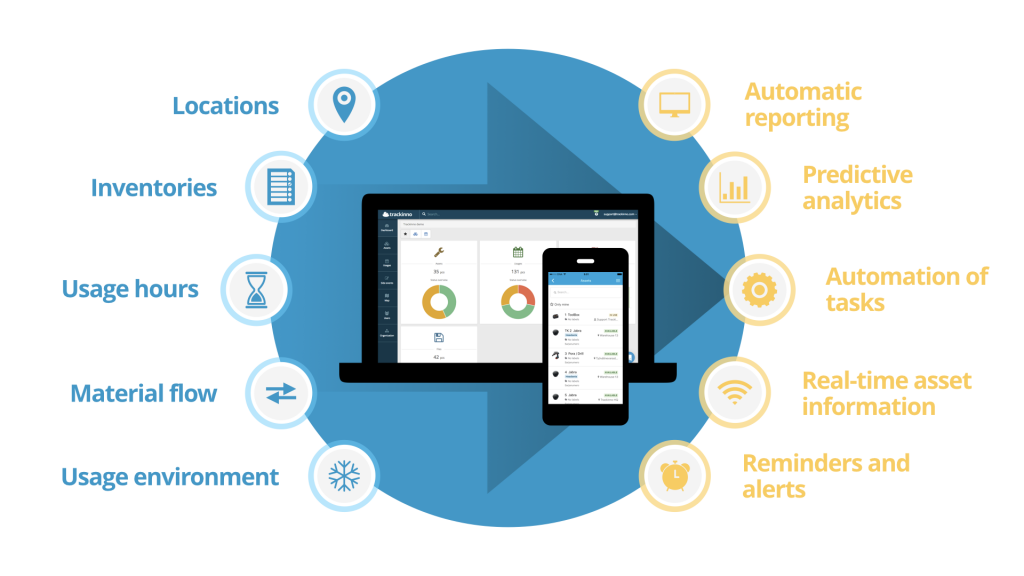One of the most promising application areas of the Internet of Things (IoT) is asset tracking. A report by Mobile Experts expects asset tracking IoT device market to triple by 2022, and IBM has listed asset tracking as one of the top 5 industrial IoT use cases.
What’s all the hype about? How can you utilize IoT in asset tracking? In this article, we’ll discuss what possibilities IoT brings to the process of keeping track of your company’s assets.
Asset Management Solutions
Asset management (or asset tracking) is the process of keeping track of your company’s physical assets and their information. Depending on your business, physical assets can mean different kinds of equipment, IT devices, tools or vehicles, for example.
Before we can discuss what advantages IoT brings to the process, we first have to understand how companies currently manage their assets and what information they’re able to track without IoT. So let’s start with that.
Legacy systems
The old way of managing assets (which is how many companies still manage their assets) is to use siloed systems, such as handwritten lists or Excel sheets, to keep track of the assets’ information. These kinds of systems are inefficient and vulnerable to errors, but they’re better than not having any system at all. These manual methods are usually very burdening for asset managers who are responsible for keeping asset records up-to-date and answering questions about assets’ whereabouts.

Asset Management Softwares
To make operations run more smoothly, many companies have started using dedicated asset management solutions, which allow every employee to easily access and update assets’ information. Implementing this kind of solution usually means that a company’s assets are tagged with asset tags (barcodes, QR codes, NFC tags, etc.) and managed using an asset management software. The asset tags can be scanned with mobile devices, and they act as links between the physical items and their information in the database.
Dedicated asset management solutions, such as Trackinno, provide companies with important asset-related information: where an asset is, who is using it, the asset’s condition, maintenance schedules, user manuals and so on. All the information can be viewed and updated by a few taps on the screen of a mobile device. Good asset management solutions can also send you notifications about changed asset statuses or expiring deadlines.

Dedicated asset management solutions provide a huge advancement compared to the old, manual methods, but what does IoT bring to the table?
IoT-enabled Asset Management: Automation and Intelligence
In addition to the benefits asset management softwares provide, IoT-enabled asset management solutions add automation and intelligence to the system. IoT-enabled asset management solutions utilize IoT sensors, which allow companies to actively track specific information about their assets without any human involvement. These IoT sensors can be attached to assets instead of or along with more conventional asset tags (e.g. QR codes).
There are many types of sensors available, such as acceleration, temperature, humidity, pressure, and proximity sensors, which can be utilized for different use cases. The sensors are attached to assets in order to gather data, which is pushed to a cloud platform. This happens at a certain frequency (e.g. every 10 minutes) depending on the technology and settings used for the data transmission. The data is then analyzed and transformed into actionable insights about assets’ usage, location, environment, and condition, for example.

Use Cases for IoT-enabled Asset Management
Based on the gathered data, IoT-enabled asset management solutions can provide companies with real-time alerts, predictive analytics, automatic reporting, data insights and more. Here are some use cases for IoT-enabled asset management:
- Locations: Automatic location data, asset tracing and geofencing solutions (e.g. utilizing GPS trackers).
- Usage hours: Automatic tracking of usage hours and notifications about reached threshold values (e.g. acceleration sensors).
- Warehouse inventory: Automatic warehouse inventories without any separate inventory events (e.g. BLE beacons).
- Material flows: Automatic tracking and reporting of material flows (e.g. RFID tags).
Due to the size, price and lifetime of the sensor devices, the use cases for IoT-enabled asset management are often limited to tracking expensive and heavy equipment (trucks, shipping containers, etc.). However, technology is evolving all the time, which enables us to track smaller and less expensive equipment with IoT in the near future. We’ll cover that topic in another blog post – stay tuned!

